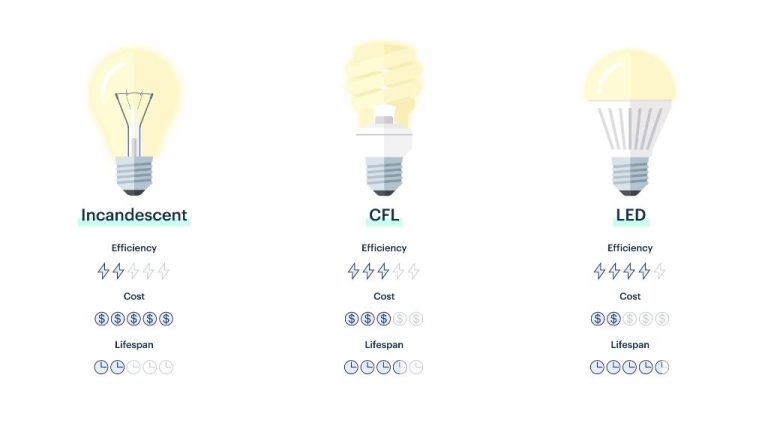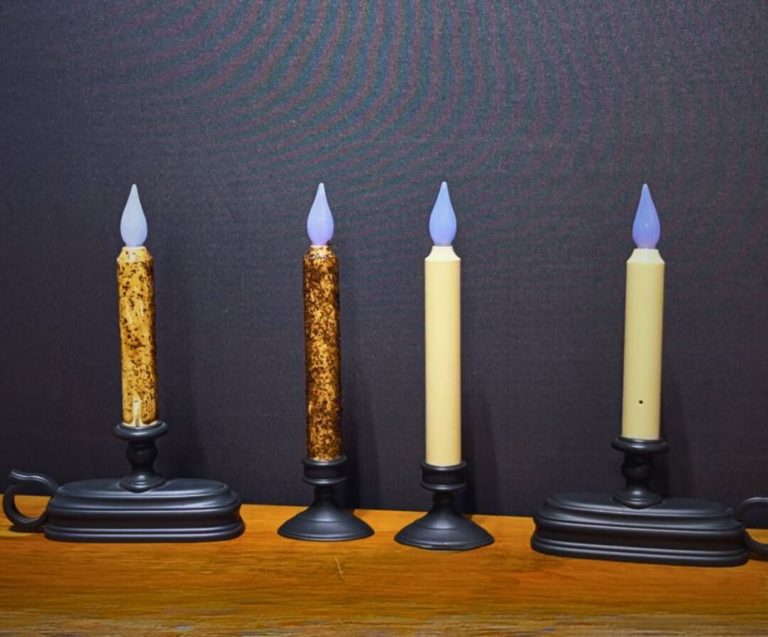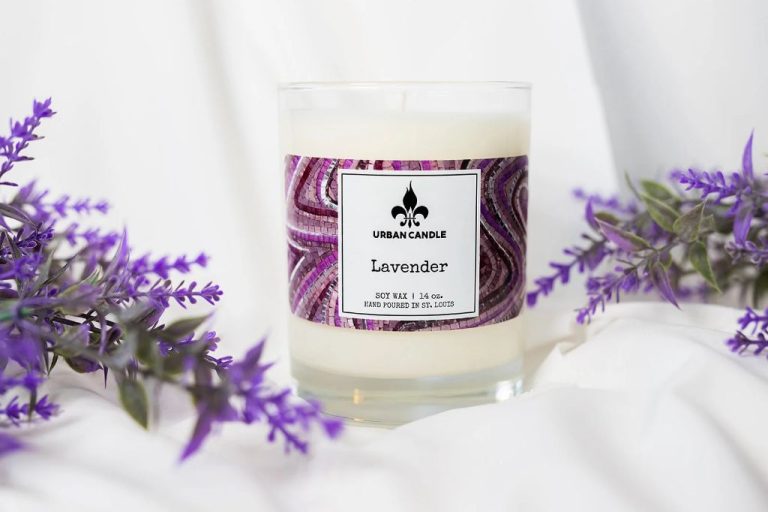How Do Heat Activated Led Candles Work?
Heat activated LED candles are a popular alternative to real wax candles. They provide the visual ambience and warm glow of a flame without the fire hazard or hassle of wax candles. Unlike regular LED candles that use batteries or USB power, heat activated LED candles turn on automatically when the “wax” is warmed up by the heat of your hand. They utilize clever technology that responds to the heat signature of human hands to activate the small LED bulb inside the candle. The result is a realistic flickering flame effect that can be turned on and off instantly and safely.
The main benefits of heat activated LED candles are their convenience, safety, and energy efficiency. Since they don’t require matches, lighters, or external power sources, you can instantly create cozy lighting anytime and anywhere. Their enclosed design prevents messy wax drips and eliminates the fire risk associated with open flames. Plus, their long battery life and lack of consumable parts like wax make them an affordable, eco-friendly lighting option.
LED Technology
LED stands for light-emitting diode. LEDs are semiconductors that produce light when an electric current passes through them. Unlike incandescent bulbs that create light by heating a filament, LEDs generate virtually no heat. Instead, the movement of electrons within the semiconductor material creates photons or particles of light. The color of the light depends on the material composition of the semiconductor.
LEDs are much more energy efficient than traditional incandescent or halogen bulbs. They use around 75% less energy while lasting 25 times longer. This makes them an environmentally friendly and cost-effective lighting option. LED bulbs also turn on instantly at full brightness and are durable and shock resistant. These advantages make LEDs ideal for use in flameless candles.
Heat Activation
Heat activated LED candles use thermochromic technology to activate the flame effect. Thermochromic materials contain heat sensitive pigments or wax that change color based on temperature. Inside the candle is a small heating element powered by batteries or USB. When the candle is turned on, the heating element warms up the thermochromic pigment or wax surrounding the LED light.
At room temperature, the thermochromic material is opaque, blocking the LED light. As the heating element raises the temperature, the thermochromic material becomes transparent, allowing the LED light to shine through and create the flickering flame effect. The transparency increases gradually as the temperature rises, enabling a natural looking flame effect.
Once the candle is turned off and begins to cool, the thermochromic pigment or wax reverts back to opaque, concealing the LED once again. This thermodynamic process allows the candle to repeatedly turn on and off just with the heat of the heating element, without any buttons or switches.
Battery or USB Power
Most heat activated LED candles use batteries as their power source. AA or AAA batteries are commonly used to provide the power necessary to run the flame effect LED and produce the realistic flickering light. The batteries are concealed within the candle housing or base.
Some models have integrated rechargeable lithium-ion batteries that can be recharged via USB. A small port is located on the bottom of the candle to plug in a USB cable for charging. This allows the candle to be powered up and used wirelessly without disposable batteries. A single charge can last 6-12 hours depending on model and usage.
The benefit of battery power is that the candles are completely portable and wireless. They do not need to be plugged into an outlet to operate. Rechargeable options also allow the convenience of USB charging when the battery runs low.
Flame Effect
The realistic glowing flame effect is created by tiny LEDs inside the candle. LEDs (or light emitting diodes) produce light by passing electricity through a semiconductor. The LEDs are carefully arranged to mimic the flickering movement and glow of a real candle flame. They use different colored LEDs to create a warm candle-like color.
The LEDs are activated by heat from the included flame bulb or battery pack. This allows the LED flame to turn on and off automatically, just like blowing out a real candle. The LEDs flicker randomly to simulate the natural movement of fire. Some LED candles have timers to make the flame last a certain duration before turning off.
With creative LED placement, the flame effect can look quite realistic, especially from a short distance. The LEDs are bright enough to illuminate the area around the fake candle, adding to the realism. The best flame effects use multiple layers of LEDs to create depth and shadows like a real flame. This technology allows LED candles to provide the visual ambiance of real candles without the fire hazard.
Safety
LED candles offer a major safety advantage over real candles. Real candles have an open flame, which presents a fire hazard. The flickering flames can easily ignite nearby combustible materials like curtains, tablecloths, dried flowers or books. This can lead to dangerous house fires. Real candles also get extremely hot as they burn, with the wax itself reaching temperatures over 150°F. Touching a lit candle can result in painful burns. The hot wax can also scald if it spatters or spills while the candle is lit.
In contrast, LED candles contain no flame or heat source. The “flame” is an LED bulb flickering to mimic the look of a real flame. But LEDs don’t get hot and don’t present any fire risk. There is no danger of burns from touching an LED candle, even when it’s switched on. The plastic or wax construction also doesn’t heat up. This makes LED candles much safer to use around pets and children. You don’t have to worry about curious kids or pets getting burned from touching a lit LED candle. Overall, LED candles provide the visual ambiance of candles without the safety hazards of open flames, heat and melting wax.
Realistic Appearance
Heat activated LED candles are designed to look extremely realistic and mimic the appearance of real wax candles. The LED bulb is encased in a shell made from real wax. This wax shell comes in various colors and can be opaque or translucent to achieve the look of a traditional candle. The dimensions of the LED candle are also made to precisely match real taper candles, votives, pillars, and other candle styles. Details like the wick are replicated using small fiber strands, allowing the LED to realistically flicker like a flame. Some LED candles even have wax drippings modeled down the sides, as wax melts when a real wick candle burns. This verisimilitude makes flameless candles almost indistinguishable from actual wax at a glance. Their convincing realism allows LED candles to seamlessly blend in with real candles for decorative arrangements.
Usage
Heat activated LED candles offer many decorative uses and can enhance a variety of events and occasions. Here are some examples of how these faux candles can be utilized:
Centerpieces – LED candles make gorgeous centerpieces for tables at weddings, anniversaries, birthdays, proms, holiday meals, and more. Arrange real or fake flowers and greenery around groupings of the candles for beautiful table decor.
Luminaries – Line walkways, stairs, or driveways with heat activated candles in paper bags or glasses for festive outdoor lighting. This works great for weddings, parties, religious events, or just seasonal decor.
Ambiance – Use fake LED candles to set a warm, cozy mood in living rooms, bedrooms, and dining spaces. Place them in candlesticks, lanterns, sconces, or other holders. Or scatter them in creative clusters on shelves, mantels, or windowsills.
Holiday Decor – LED candles add twinkle and sparkle to holiday decorating. Arrange them in windows, on mantels, in table displays, on staircases, tucked into foliage, etc. They work for any holiday from Christmas to New Year’s Eve, Valentine’s Day to the Fourth of July.
Outdoor Lighting – Line garden paths, accent patios, or light up trees and shrubs with strings of flameless candles. Use them in paper bags or jars to decorate porches, decks, gazebos, and outdoor staircases.
Cost
Heat activated LED candles are generally more cost effective than real wax candles. Though the upfront cost of an LED candle may be more than a traditional wax candle, they last much longer without needing to be replaced. You also avoid the ongoing cost of buying new candles.
One LED candle may cost $10-20, but it can be reused for years with no need to replace the “wax.” In contrast, a set of standard wax candles may only cost $5-10 initially, but will burn out after 5-10 hours of use. This means you’d need to keep buying more candles to maintain the same look, costing potentially $50-100 per year.
There are also added costs to real wax candles like cleaning up melted wax or replacing holders that get wax damage over time. So heat activated LED candles end up being cheaper in the long run compared to constantly buying and replacing real wax candles.
Conclusion
In summary, heat activated LED candles provide a unique alternative to traditional candles. The flameless design activated by heat allows them to mimic the visual ambiance of real candles without the fire risk. While they require batteries or USB power to function, the LED technology makes them last much longer than standard candles before needing to be replaced. The ability to “light” them by applying heat from the hand gives them an interactive element not present with normal candles. With continual improvements being made to their realistic appearance and flickering effect, heat activated LED candles create mood lighting for any situation in a safe, affordable and sustainable way.
Overall, for those seeking the visual beauty of candles without the hassle, danger and upkeep, heat activated LED candles present an innovative option to consider. Their versatility, durability and authentic look make them a smart choice for everyday use or special occasions. As the technology develops, they will likely only become more convincing and widely adopted alternatives to traditional wax and wick candles.





